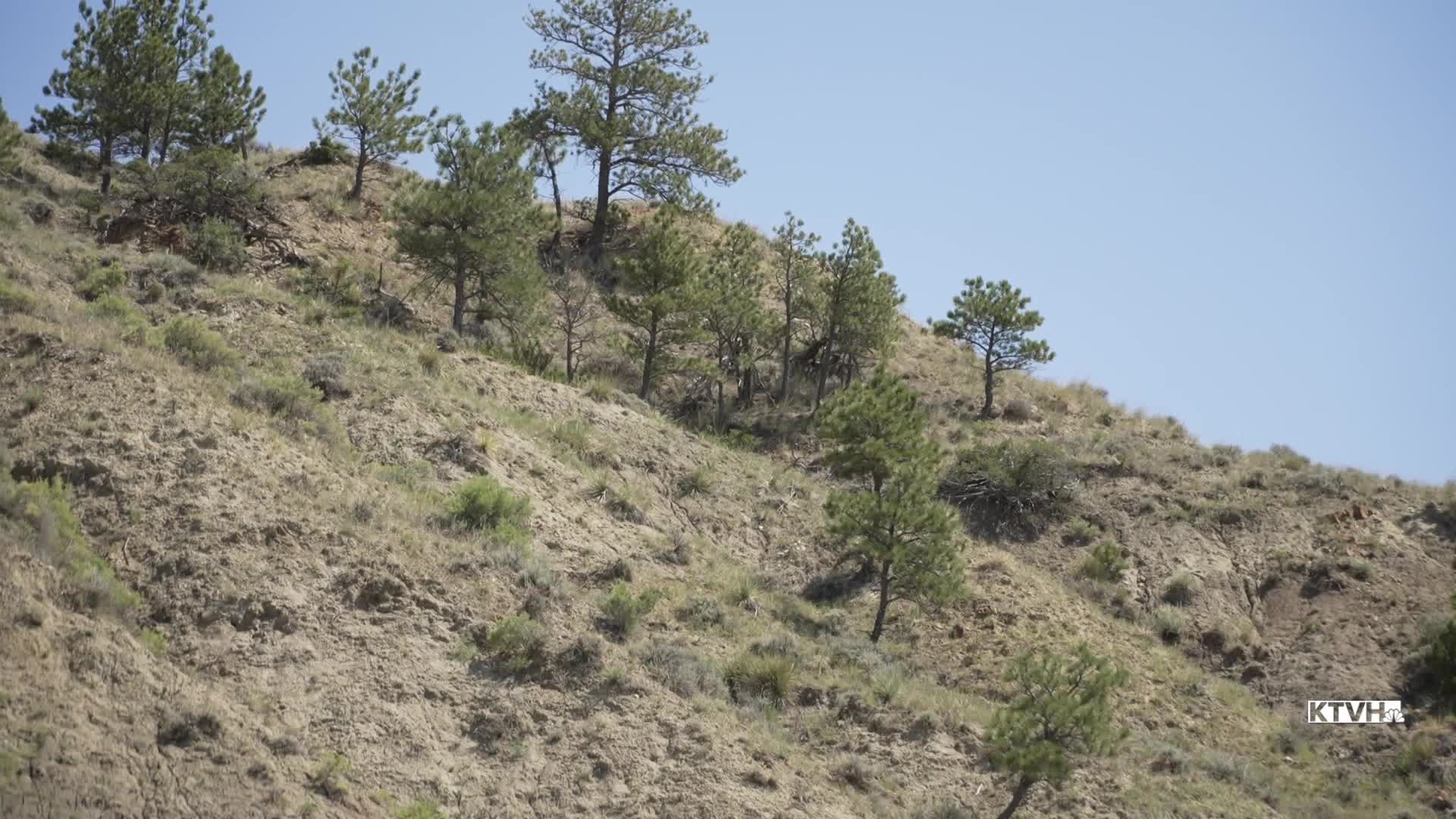FERGUS COUNTY — If you drive north from Winifred on Stafford Ferry Road, by the time you reach the Missouri River, you’ll be on public land, owned by the U.S. Bureau of Land Management. But on the 16-mile trip into the Missouri Breaks, you’ll also pass through a lot of private land. Currently, the state of Montana is looking at making an agreement to keep more than 1,000 of those privately-owned acres available for hunting, recreation and wildlife habitat.
“It's a very, very important piece of property for a conservation easement,” said Jason Rhoten, supervisor for Montana Fish, Wildlife and Parks’ Region 4, which covers much of north-central Montana.
(Watch the video for more on what's next for the Stafford Ferry area and the statewide Habitat Montana program.)
Under the proposed Stafford Ferry Conservation Easement, the state would pay almost $1 million to the current landowner. The 1,080 acres of sagebrush and grassland are currently being used for livestock grazing. The easement would allow that to continue, while limiting possible development, providing for public access and, particularly, preserving key habitat for bighorn sheep.
“That area is probably recognized as one of the premier bighorn sheep herds in the western United States,” Rhoten said.
The area under the easement would remain privately owned, but Rhoten said it would allow for improved to around 15,000 acres of neighboring public land owned by the BLM and the Montana Department of Natural Resources and Conservation.
According to FWP, an appraisal valued the easement at $1.08 million. The landowner is donating some of the value, and the state is also receiving funding from NorthWestern Energy, the Wild Sheep Foundation, and the Montana Wild Sheep Foundation. That leaves FWP to pay for $980,000, with much of that coming from Habitat Montana.

The Stafford Ferry easement is just one of a number of Habitat Montana-funded projects that the Montana Fish and Wildlife Commission is set to discuss at their meeting Aug. 21. In addition, the state is looking at an easement of more than 50,000 acres on timberland in the Cabinet Mountains between Kalispell and Libby, as well as more than 20 conservation leases to support prairie habitat across eastern Montana.
Habitat Montana was created in the 1980s, with the goal of providing funding so the state could acquire and manage areas important for wildlife habitat. The program was originally funded through fees on hunting licenses, but its account grew significantly starting in 2022, when the state began directing revenue from Montana’s new legal marijuana sales toward it.
Today, FWP chief financial officer Lena Havron says the Habitat Montana account has about $38 million. She said the department hasn’t approached projects differently than before they got this new funding source.
“We're looking for the perfect project that gives great habitat conservation, public access,” she said. “We get an opportunity to pursue a lot of projects. But we feel like it's imperative to have complete public buy-in – local government, citizen buy-in – to start that process, so the perfect projects are few and far between.”
Havron said license fees are now providing about $4.5 million a year for the account, while marijuana taxes provided about $10 million.
With the Habitat Montana account so full, state lawmakers debated throughout the 2025 Montana legislative session whether to redirect that marijuana revenue. In the end, the Legislature passed and Gov. Greg Gianforte signed House Bill 932, a proposal that kept the money going to conservation, but expanded how it can be used.

Going forward, the share of marijuana taxes that went toward Habitat Montana will go into a new “Habitat Legacy Account.” 75% of that money can be used for similar projects as it has currently, but there will be more options.
“We can still do easements for title acquisitions, habitat conservation leases, but it expands the use to state water projects as well as any conservation project that has an access component,” said Havron.
20% of the revenue will go toward the Wildlife Habitat Improvement Program, which has also supported habitat projects but with a focus on managing noxious weeds. The remaining 5% will be a new dedicated funding stream to pay for designing and building wildlife crossings over highways.
“We feel like it opens more doors for us to achieve better access and better habitat for wildlife,” Havron said.
Havron said the money from license fees will continue to go to Habitat Montana as it has before.
“We feel like the revenue we received through license sales was sufficient to cover how we have been doing those projects in the past, so the change doesn't slow down the program in our opinion,” she said.



